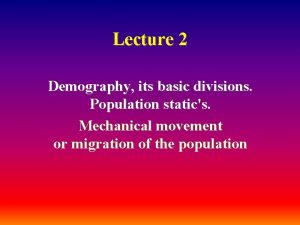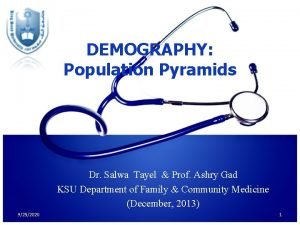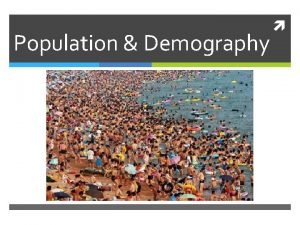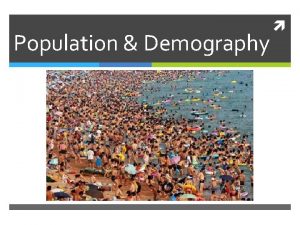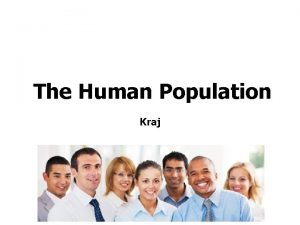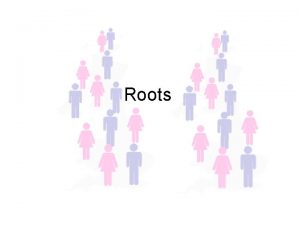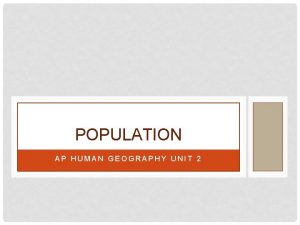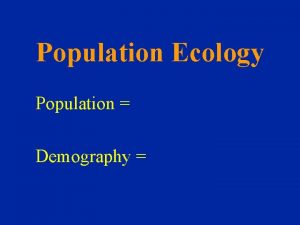Chapter 21 Population and The Environment 1 Demography










- Slides: 10

Chapter 21 Population and The Environment 1

Demography: the study of population • Demography (人口學): the scientific study of population. • Sociologists are interested in various elements of population: such as fertility, mortality, and migration. • A census (普查) is an enumeration or counting of a population. The constitution of the US requires that a census be held every 10 years to determine 2 congressional representation.

• This periodic investigation is supplemented by vital statistics; these records of births, deaths, marriages and divorces are gathered through a registration system maintained by governmental units. • Birth-rate is the number of live births per 1, 000 population in a given year. (total fertility rate) • Death rate is the number of deaths per 3 1, 000 population in a given year. (infant

• Life expectancy: the median number of years a person can be expected to live under current mortality conditions. • Growth rate: the difference between births and deaths, plus the difference between immigrants (those who enter a country to establish permanent residence) and emigrants (those who leave a country permanently) per 1, 000 population. 4

5

6

World Population Patterns • Demographic transition: is the change from high birth rates and death rates to relatively low birth rates and death rates. A three-stage process: 1. Pre-transition stage 2. Transition stage 3. Posttransition state • • A population pyramid (人口金字塔): a special type of bar chart that distributes the population by gender and age. It is generally used to illustrate the population structure of a society. Zero Population Growth (ZPG): is the state of a population in which the number of births plus immigrants equals the number of deaths plus 7

8

The Environment • Air Pollution • Water Pollution • Contamination of Land • Kyoto Protocol (1997): more than 160 nations gathered for resolving the issue of climate change (greenhouse effect). • Environmental justice: a legal strategy based on claims that racial minorities are subjected disproportionately to 9 environmental hazards.

10
 Demographic data definition
Demographic data definition Static demography
Static demography Cso business demography
Cso business demography Elements of demography
Elements of demography Demographic transition model ap human geography definition
Demographic transition model ap human geography definition Sources of demographic data
Sources of demographic data Components of demography
Components of demography Demography antonym
Demography antonym Chapter 4 population ecology section 1 population dynamics
Chapter 4 population ecology section 1 population dynamics Population ecology section 1 population dynamics answer key
Population ecology section 1 population dynamics answer key Population ecology section 1 population dynamics answer key
Population ecology section 1 population dynamics answer key

